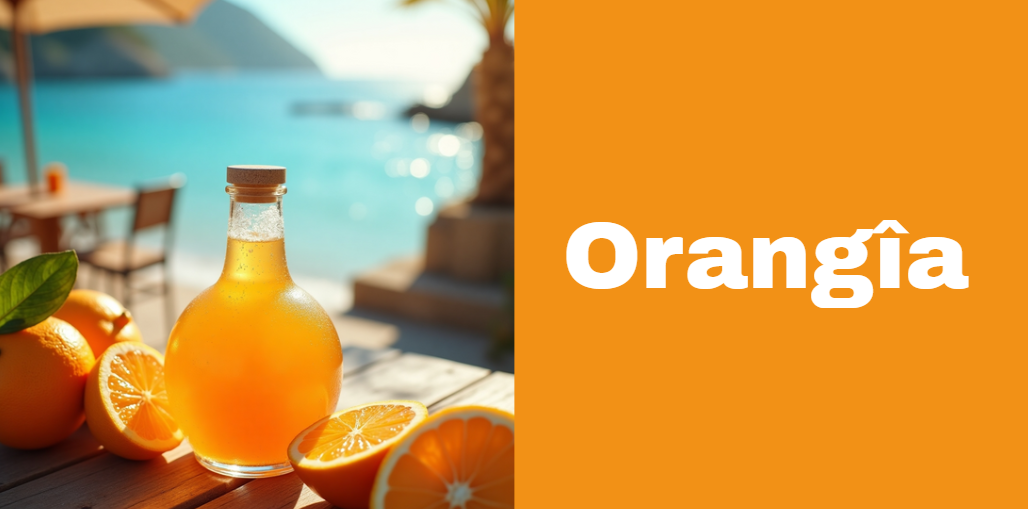Orangîa: The Complete Story of a Timeless Citrus Drink – History, Culture and Flavor
Orangîa is more than just a fizzy orange drink; it’s a cultural icon that blends taste, heritage, and visual charm into a single glass bottle. Originating in the Mediterranean region, Orangîa has stood the test of time by offering a unique combination of real citrus juice, natural pulp, and carbonated refreshment.
What sets Orangîa apart from standard sodas is its authenticity and the ritual it encourages: shake gently before drinking to mix the pulp—a sensory invitation that few beverages offer.
The Origins and Early History
The story of Orangîa begins in 1933 with a Spanish pharmacist named Agustín Trigo Miralles. Inspired by the abundance of citrus fruits in the Mediterranean, he developed a drink called “Naranjina,” a blend of orange juice and carbonated water.
Just two years later, French-Algerian entrepreneur Léon Beton acquired the recipe and refined it. By 1936, Orangîa was officially introduced to the public at the Marseille Trade Fair in France, drawing attention for its fresh taste and natural ingredients.
Brand Development Over the Years
The turning point for Orangîa came in 1947 when Léon’s son, Jean-Claude Beton, took control of the brand. Recognizing the drink’s potential, Jean-Claude focused on improving production quality and expanding reach.
He introduced the now-famous bulbous glass bottle in 1951, shaped to resemble an orange—complete with a textured surface that mimics the fruit’s peel. This bottle became instantly recognizable and played a huge role in establishing Orangîa’s identity.
After Algeria’s independence in 1962, production moved to Marseille, ensuring continuity for the growing European market.
Orangîa’s Unique Formula and Ingredients
One of the secrets behind Orangîa’s enduring popularity lies in its distinctive formula. Unlike generic orange sodas that rely heavily on artificial flavors and colors, Orangîa includes a blend of real citrus juices:
| Citrus Juice Type | Approximate Percentage | Flavor Profile |
|---|---|---|
| Orange | 10%–12% | Sweet, tangy |
| Lemon | 1%–2% | Zesty, sharp |
| Mandarin | Trace | Floral, aromatic |
| Grapefruit | Trace | Bitter, bold |
In addition to these, Orangîa features carbonated water, natural sweeteners (either sugar or HFCS depending on the market), and a notable component—orange pulp. The pulp settles at the bottom, making the “shake before use” ritual essential for experiencing the drink’s full flavor and texture.
The Iconic Packaging Design
The pear-shaped bottle introduced in the early 1950s became an inseparable part of Orangîa’s visual identity. With a pebbled texture that resembles an orange peel and a squat, rounded shape, the bottle offered a tactile and visual experience unique to the brand.
This design served not just an aesthetic purpose but also made the drink stand out on store shelves, enticing both young and old consumers.
Marketing and Advertising Strategies
Orangîa’s marketing approach has always embraced creativity and cultural relevance. One of the most memorable campaigns is the “Shake Me!” initiative, which transformed what could be a flaw—sediment at the bottom—into a signature feature.
French graphic artist Bernard Villemot contributed timeless poster art that aligned the brand with style and elegance. Later, TV commercials took a playful turn, including a rollercoaster-themed ad directed by French comedian Alain Chabat and a provocative UK campaign featuring anthropomorphic animals that sparked widespread conversation.
Additionally, Orangîa has shown inclusivity in its advertising, supporting LGBTQ+ visibility in various global campaigns, reflecting a progressive brand ethos.
Ownership and Global Reach
Over the years, Orangîa has changed hands several times:
- 1984 – Acquired by Pernod Ricard, a French conglomerate.
- 2000 – Sold to Cadbury Schweppes, expanding its presence in Western markets.
- 2009 – Became part of Suntory Group, a major Japanese beverage corporation.
- 2020 – Licensing in North America granted to Ventures Food & Beverage.
Today, Orangîa is produced or licensed in various countries, including the UK, Iran, Vietnam, and France. While its U.S. market share has declined, its international footprint continues to grow steadily.
Flavor Varieties
Orangîa is not a one-size-fits-all beverage. Over the years, several variations have been introduced to meet changing consumer preferences:
- Classic Original – The iconic blend of citrus and pulp.
- Orangîa Sanguine (Blood Orange) – A more robust, tart version with added caffeine and guarana.
- Light Versions – Featuring reduced sugar content.
- Miss O and Rouge Editions – Targeted at specific demographics with slightly altered flavor profiles.
Cultural Impact
In France and parts of Europe, Orangîa is often considered more than a drink—it’s a summer tradition. Whether sipped on a terrace café or enjoyed at the beach, Orangîa evokes memories of Mediterranean leisure.
The brand also enjoys a reputation for quality. Many consumers consider Orangîa a more authentic alternative to mass-market orange sodas like Fanta or Sunkist. Its use of real juice and pulp gives it a superior taste and a perception of being more “real” and natural.
Digital and Brand Identity in the Modern Age
In keeping up with the digital world, Orangîa’s website underwent a dynamic redesign in recent years. Filled with interactive visuals, animations, and user-friendly navigation, the site reflects the drink’s playful and premium identity.
While some early mobile versions lacked optimization, the current interface is responsive and rich in storytelling, capturing the essence of Orangîa both visually and emotionally.
The Signature “Shake Experience”
Orangîa’s defining ritual—shaking the bottle before drinking—serves both a practical and emotional function. It ensures the pulp is evenly distributed, enhancing flavor and mouthfeel. More importantly, it offers a moment of connection between consumer and product.
Few beverages build a small but memorable ritual into their brand identity, making this a hallmark of Orangîa’s charm.
Market Presence and Trends
Although Orangîa remains widely available in Europe, North Africa, and parts of Asia, its presence in North America has waned over the years. Distribution issues and competition from local sodas have made it less visible in the U.S.
However, under the stewardship of Suntory, there are signs of revitalization and renewed marketing efforts. Its global identity continues to evolve while staying true to its Mediterranean roots.
Comparisons with Other Orange Drinks
| Feature | Orangîa | Fanta (U.S.) | Sunkist |
|---|---|---|---|
| Real Juice Content | 10%+ | <2% | Minimal |
| Contains Pulp | Yes | No | No |
| Sugar Type | Cane Sugar / HFCS | High Fructose Corn Syrup | HFCS |
| Taste Profile | Natural, tangy | Sweet, synthetic | Sweet, less citrusy |
Orangîa clearly stands apart from its competitors in terms of quality, taste, and authenticity.
Health and Sustainability Focus
Orangîa is often perceived as a healthier alternative due to its use of real juice and the absence of artificial coloring. However, like most soft drinks, it still contains sugar, making moderation important. The brand has begun exploring more sustainable packaging and promoting environmental awareness in its campaigns.
Conclusion
Orangîa is not just a drink—it’s a story of innovation, tradition, and cultural resonance. From its humble beginnings in the Mediterranean to becoming a global symbol of refreshing quality, Orangîa continues to delight generations with its distinct flavor and iconic design.
Its journey, defined by authenticity and simplicity, reminds us that sometimes the best products are those that stay true to their roots.
Recommended Articles
#mobilecreativeorg – Empowering Creators Through Mobile Innovation
Exploring hlbalbums.pk Labollita: A Treasure Trove of Pakistani Music Archives
Explore the Skrawer Wayne Cartoon Book: A Whimsical Journey Through Art, Humor and Imagination
Sodaimar: Exploring Its Origins, Meaning and Modern-Day Relevance






